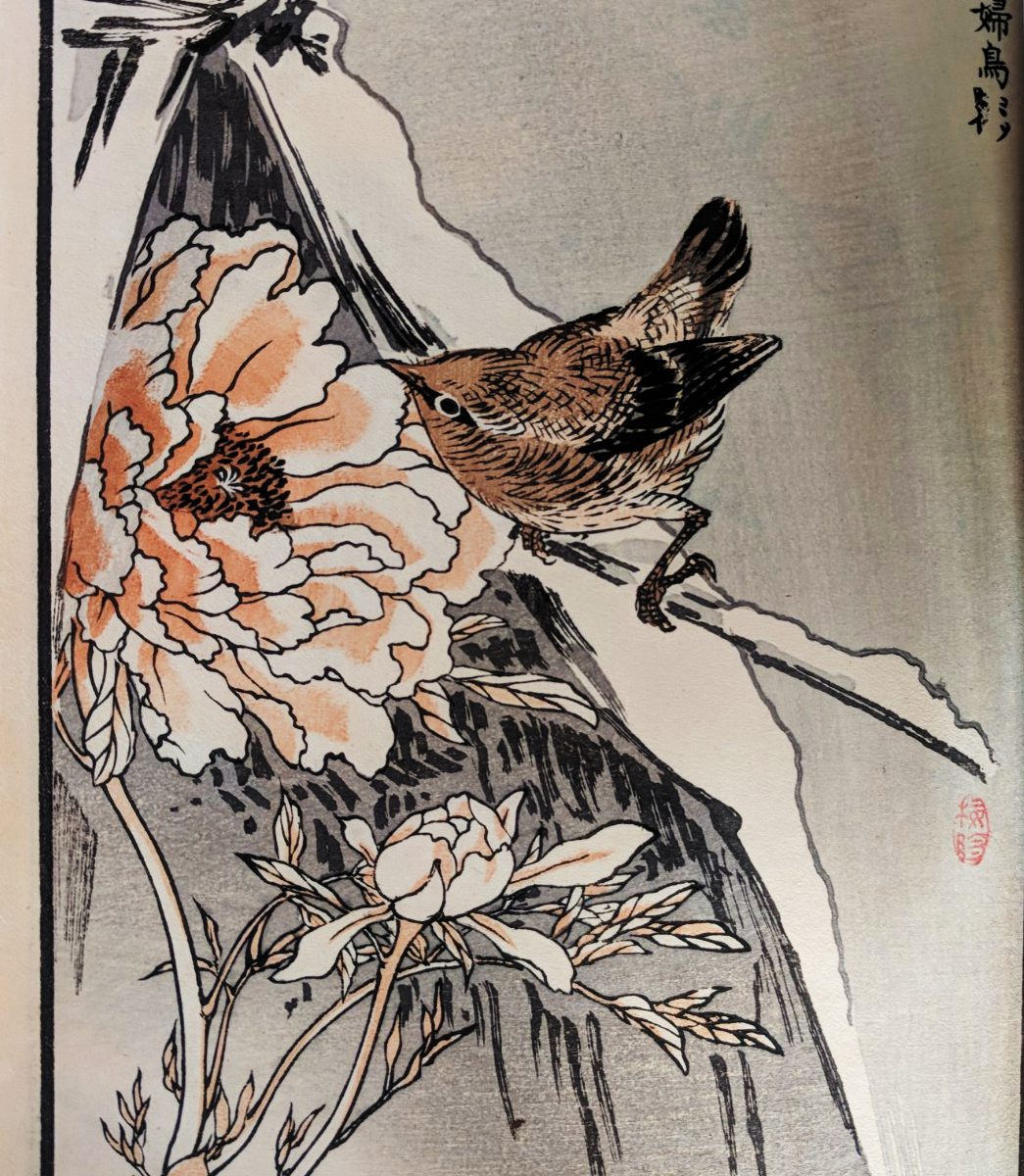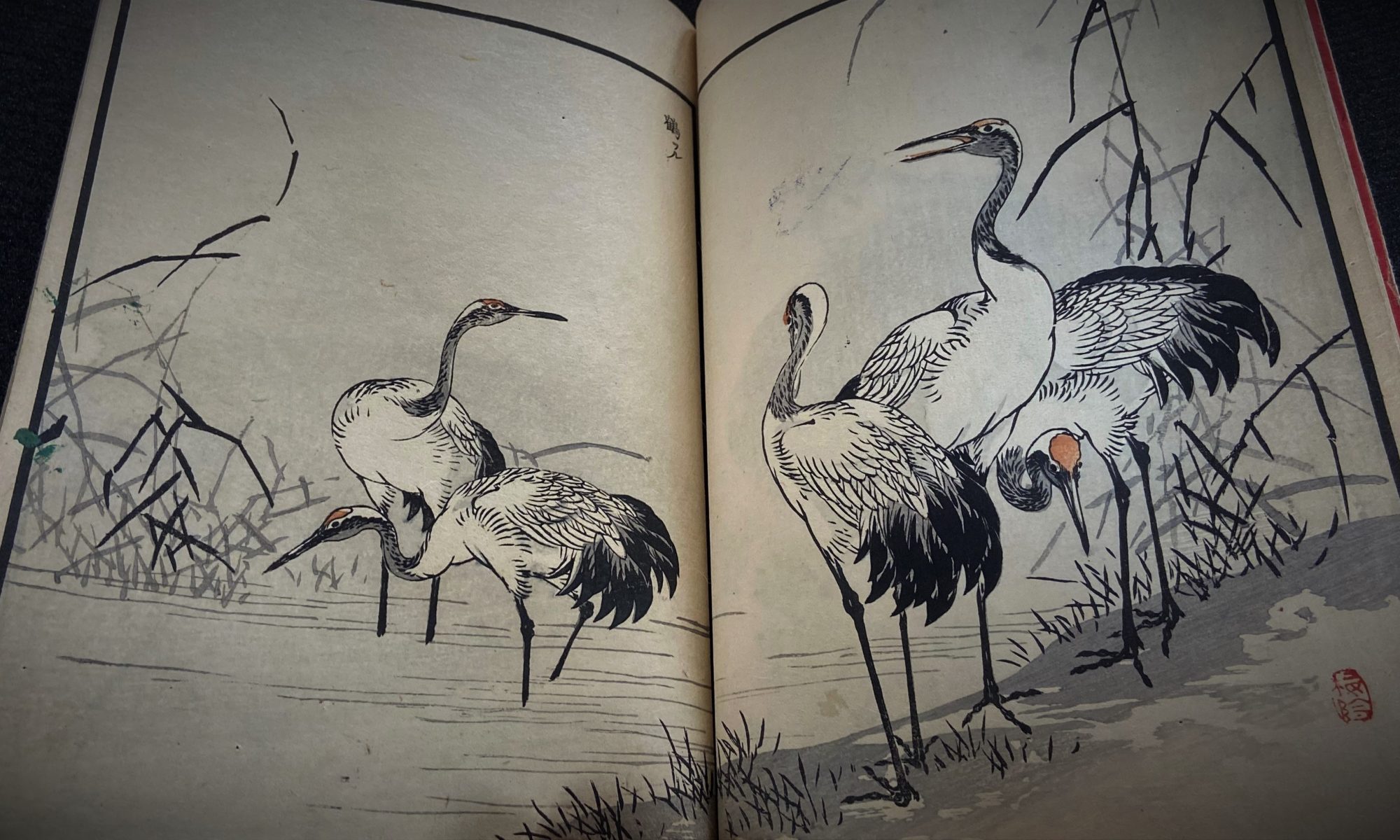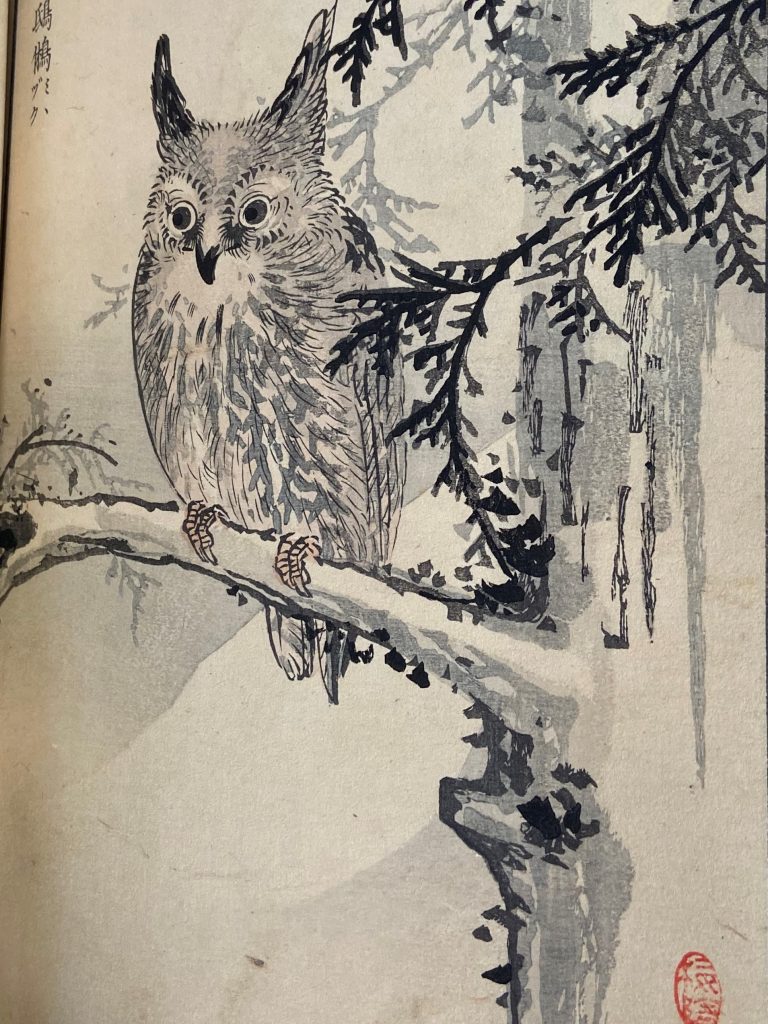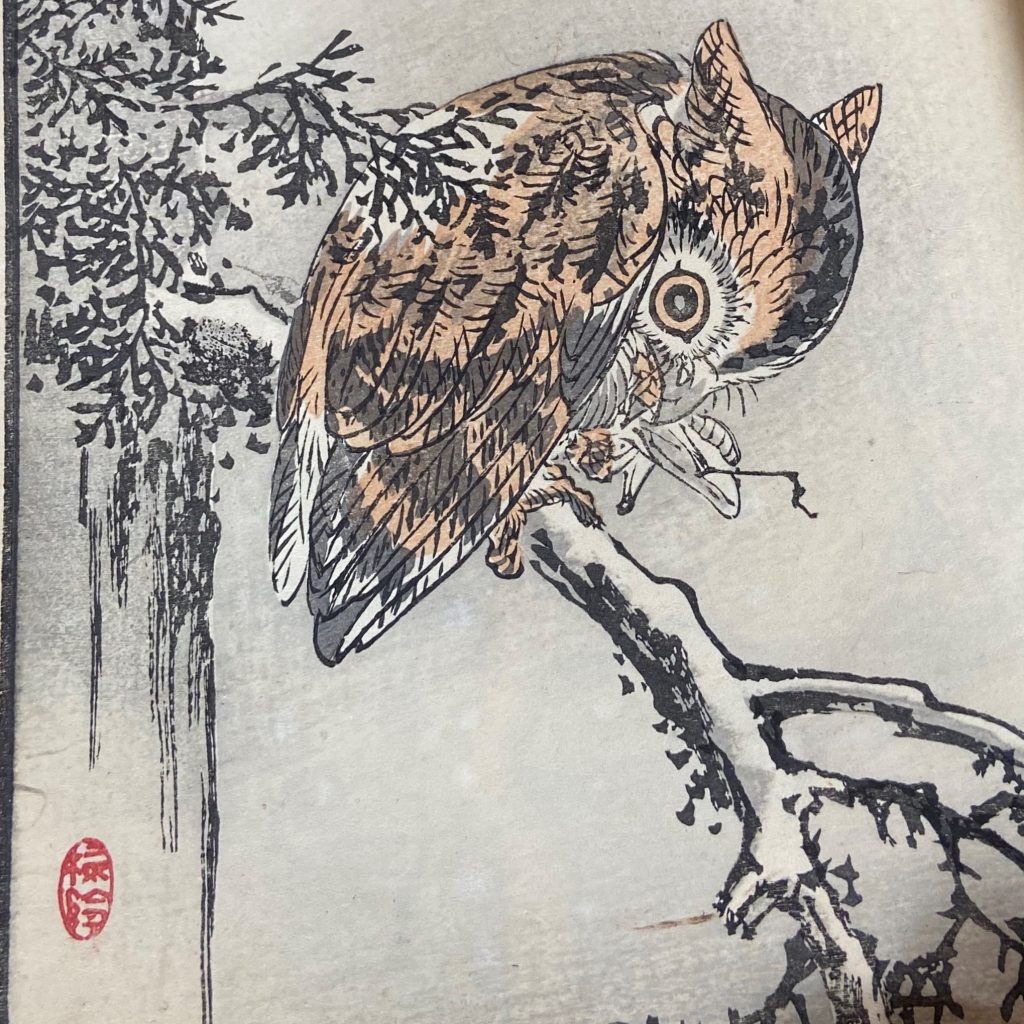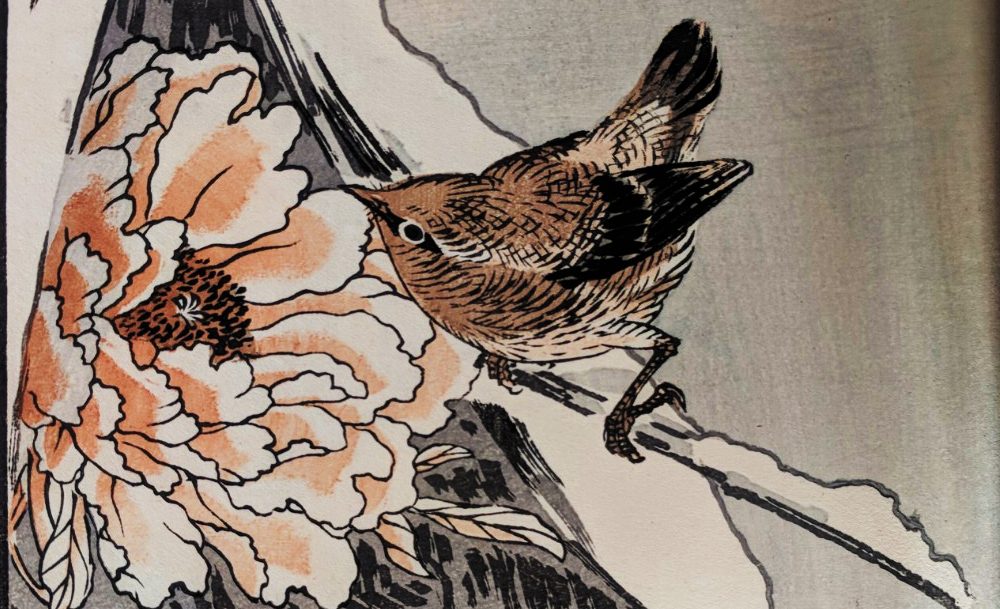
This post comes to us from Discovery Fellow Stepheny Pham
As my fellowship finishes up with the semester, I am able to thoroughly reflect on my journey. I have had the opportunity to look at a diverse range of books from Special Collections, including American ornithology books, animal husbandries, almanacs, emblem books, and catalogues and travel journals from the Colombian World Fair. All of these items provided valuable insight into lifestyles and scientific knowledge in the 1800s, from European domestication practices to global, cultural artworks. It was fun and fascinating to read about these topics and uncover the rich histories behind each photo. Even if I did not incorporate every element into my final project, I enjoyed interacting with the materials.
My research project revolved around Kono Bairei’s “Book of One Hundred Birds,” and one aspect I found fascinating were the species of birds featured in his book, mainly crows and owls. From the ornithology books and further secondary literature, I learned the differing perspectives of these birds from a western and eastern point of view. Crows, for instance, are the most known and least beloved bird to Americans. They are viewed as thieves and vagabonds, meanwhile, according to Japanese mythology they are warriors and masters of magic.
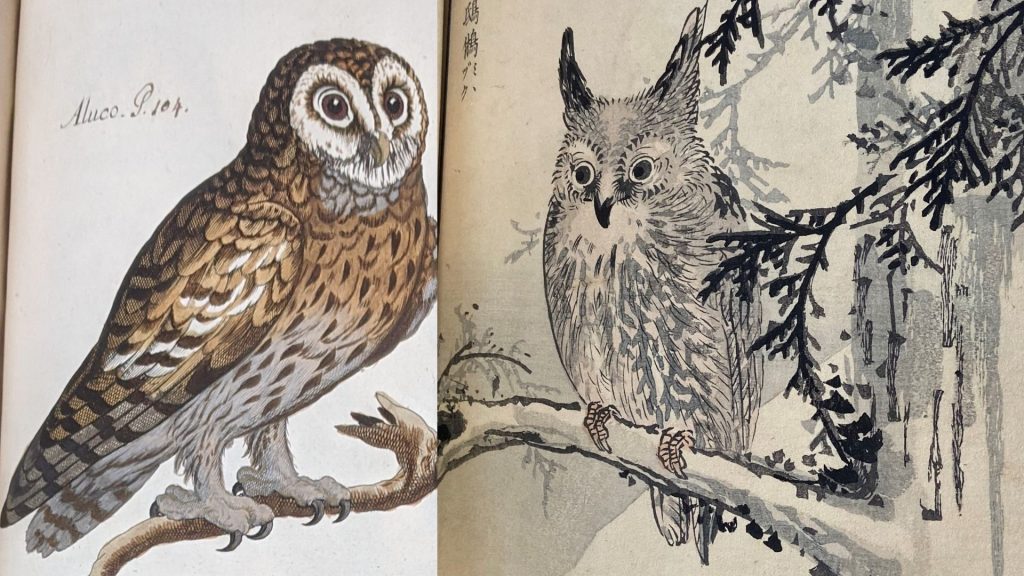
Owls might be bad omens in the west but good luck symbols in the east. These contrasts are interesting to me: how does Bairei’s art portray Japanese attitudes towards different bird species, to further the differences between American perspectives? And conversely, is there any overlap in symbolism with bird species? Given the diversity and number of bird paintings, I would imagine there would be at least one bird that fits the description. I would have liked to further explore this discussion on bird symbolism in cultures.
Furthermore, I was able to explore the life of Kono Bairei himself, the iconic artist, teacher, and trendsetter. I learned that many of his works were experimental in brushstrokes and color, and his art appeared heavily western-influenced. These aspects made him and his art stand out compared to the other kacho-e artists in the Meiji Era, but subsequently made him unpopular among his colleagues. I find it interesting that upon historical reflection, we as an audience appreciate Bairei and his unique aesthetic paintings, but during his time period, his art elicited the opposite reaction. He also taught younger artists the way of kacho-e and opened an art school and his own studio. The actions reflect his confidence and faith in his work as well as his nature for teaching others.

